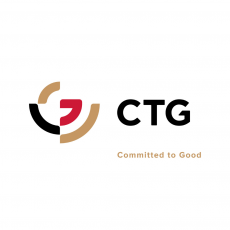Organizational Setting and Reporting Relationships:
The United Nations Human Settlements Programme, UN-Habitat, is the agency for human settlements. It is mandated by the UN General Assembly to promote socially and environmentally sustainable towns and cities. The UN-Habitat Afghanistan country office is part of the Regional Office for Asia and the Pacific (ROAP). The position is located in Kabul provinces, Afghanistan.
Learning from the experience in the last 30 years and recognizing the realities of the current context in the country, UN-Habitat in Afghanistan designs and implements projects in settlements of all sizes, putting the needs of people first, targeting the most vulnerable and meeting local needs by focusing on area-based and community-driven outputs. The portfolio currently covers projects ranging from humanitarian responses to supporting recovery and meeting basic human needs. UN-Habitat collaborates closely with the UN country team as well as with technical and financial partners in Afghanistan, in alignment with the UN Strategic Framework for Afghanistan (UNSFA) and the Humanitarian Needs and Response Plans (HRNP).
Afghanistan is experiencing a continuous humanitarian crisis, with over half a million people in the need of humanitarian assistance. Many people are displaced due to climate change, internal displacement or massive returns from neighbouring countries, and many have sought refuge in the relative safety of cities, which are growing rapidly. The number of people living in unplanned, underserviced and informal settlements, including in risk prone areas, is increasing and living conditions as well as access to services is inadequate. The unfolding crisis in Afghan cities, which is accelerated by climate change impacts and natural disasters, is occurring in a context of underlying vulnerabilities, including infrastructure deficits, insecure livelihoods and pervasive tenure insecurity. Most at risk are displaced people in informal settlements, with women, disabled and ethnic minorities being particularly vulnerable.
UN-Habitat applies a participatory and community-driven approach, using participatory spatial planning and action planning processes to enable communities to identify and implement priority service and infrastructure investments to support their socioeconomic recovery processes and creating an enabling environment for durable solutions. UN-Habitat's community-cantered “People's Process” is a proven and effective approach to reduce vulnerability at scale in the Afghan context. UN-Habitat builds upon its long tradition of partnering with with communities in informal settlements to create sustainable and safe settlements, improve living conditions and adequate livelihood opportunities to those most in need.
About the Project
The takeover of government in Afghanistan by the DFA in August 2021 triggered a dire humanitarian crisis in the country, leading to serious violations of human rights, poor governance, and a sharp decline in socioeconomic development. With an estimated 23.7 million people, more than half of Afghanistan’s population, in need of humanitarian assistance in 2024 and over 90% living in poverty, international aid has reached vulnerable populations across the country considering life-saving services, but poor residents in urban areas have been often left behind, resulting in increased urban vulnerability.
Decision-makers frequently assume that poverty, vulnerability, and social exclusion are features of rural areas, not cities. This is, however, not the case. Urban populations are facing more financial barriers than people in rural areas, spending more income on meeting their needs, contributing to increasing urban poverty. In addition, rapid migration into urban areas has also been remarkable; Some macro-level analysis indicates that in 1950, only 1 out of every 20 Afghans lived in cities, but in 2022, 1 out of every 4 lived in cities, and by 2060, it is estimated that 1 out of every 2 – 50% of the total population – will live in cities (UN DESA, UN-Habitat, World Bank). While many Afghans are fleeing from frequent natural disasters, seeking better employment opportunities, and living environment, Afghanistan has been experiencing a massive increase in the arrival of Afghan returnees from Pakistan following a government decree in September 2023. In Kabul and Herat, the two most populous provinces in Afghanistan, rapid urbanization and a changing climate increases the urban poor’s vulnerability to hazards.
A critical but often overlooked factor impacting urban life is the poor state of the country’s key infrastructure related to the provision of essential services. In Kabul and Herat, the essential infrastructure for ensuring basic living environment to protect human rights of vulnerable populations is insufficient, even quantitatively and qualitatively. The protracted humanitarian crisis has strained the public health system, with most facilities having poor infrastructure and limited capacity to provide healthcare services. Deteriorating buildings, outdated equipment, and power issues hinder operations for basic services.
The inadequate hygiene and sanitation facilities including clean water sources and waste disposal systems not only hampers healthcare access but also plays a critical role in the spread of diseases. Infectious diseases are the consequence and catalyst of poor humanitarian conditions, including poor sanitation, water quality and quantity, malnutrition, reduced school attendance, poor health, and reduced income. Infrastructure for socially vulnerable populations, particularly women, is not well developed.
Against this backdrop, the project aims to improve the living environment of the urban poor through rehabilitating essential community infrastructure in Kabul and Herat Provinces in a sustained and disaster-resilient manner. The target locations will be 20 GA in the 10 most vulnerable Police Districts (PDs) of Kabul and earthquake-affected villages of Zindajan District in Herat.



